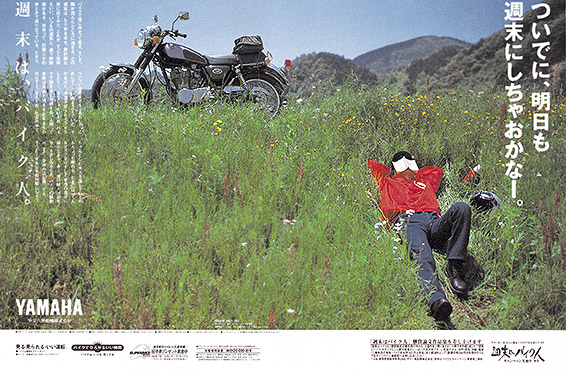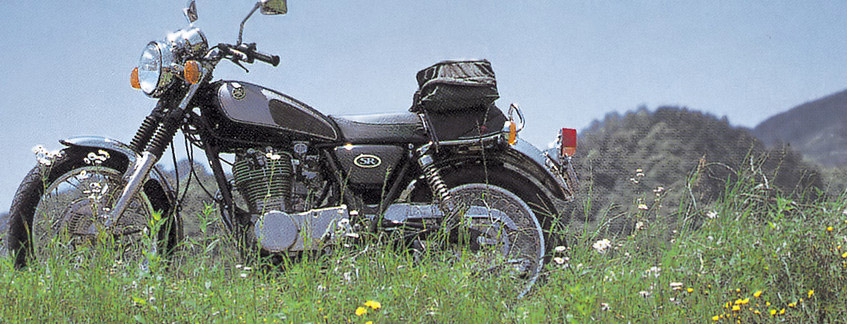Yamaha conducted a massive sales promotion campaign, "Weekend Riders," from March 1996 to summer 1998 in order to generate demand for motorcycles. The campaign naturally promoted the fun of cruising to teenagers and young people in their twenties, at the time an age segment that had relatively little experience with motorcycles due to lifestyle changes. However, another major aim of the campaign was to bring back the middle-aged segment, particularly people who enjoyed riding motorcycles when they were young but now only had unused licenses.
Along with conducting an extensive public relations campaign with a media mix that included television and radio commercials, flyers and posters at dealerships, full-page ads in newspapers, and advertisements in popular weekly magazines and specialty magazines, Yamaha developed a large-scale campaign in partnership with Yamaha dealerships to appeal to the motorcycle-riding lifestyle. This included holding test-ride events for the Majesty 250 at some 500 dealers around the country in order to popularize motorcycles as a means of commuting to work.

For the Weekend Riders campaign, Yamaha used well-known middle-aged celebrities who matched the ad concepts. Singer Ryudo Uzaki, actor Jinpachi Nezu, and adventurer Shinji Kazama appeared in dramatic situations together with motorcycles, drawing the attention of a broad range of age groups.
In conjunction with the Weekend Riders campaign, a contest was held that solicited works of art related to having fun on a motorcycle. A large number of essays, illustrations, photographs, and other works depicting the joy of motorcycles were submitted.
The first Weekend Bike-Life Essay competition was held in 1996, which resulted in 1,886 entries being submitted from around the country. Over 70% of the entrants were in their thirties, but there were also many entries from people in their forties and fifties, evidence that the Weekend Riders campaign resonated with many people. The campaign not only brought dormant riders back to the motorcycle-riding life, it also created substantial ripple effects that generated new demand. As an advertising strategy, the campaign was a major success. In addition, it improved the image of Yamaha products, led to greater demand in the industry overall, and improved the standing of motorcycles in general, earning the campaign high regard both inside and outside the industry.
.










